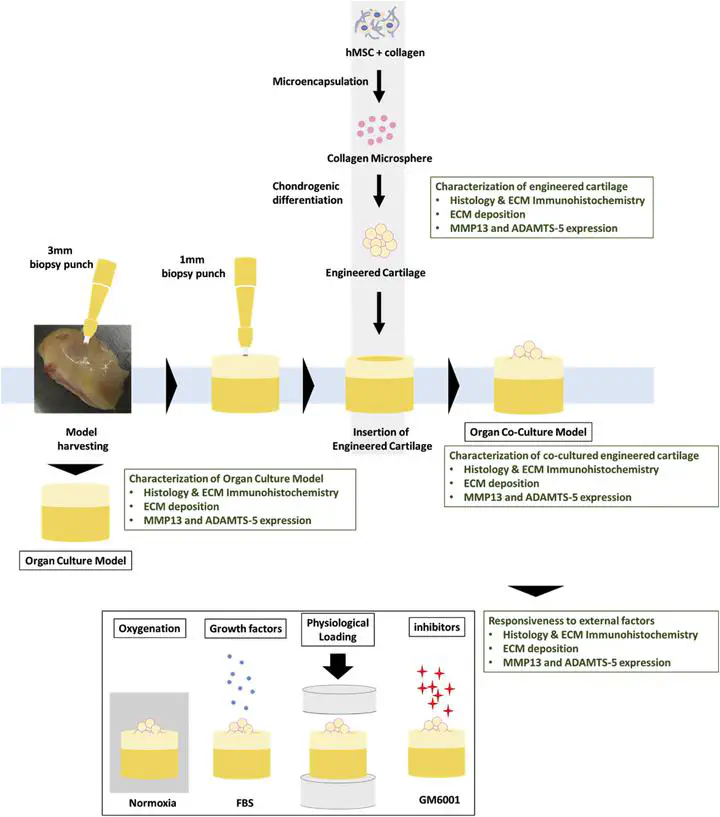New Paper: A human osteoarthritis osteochondral organ culture model for cartilage tissue engineering

In this study, we demonstrated the development of a human OA osteochondral organ culture and tested the feasibility and potential of using this model as an in vitro evaluation tool for emerging cartilage therapies.
Check out the published paper here: https://doi.org/10.1016/j.biomaterials.2018.02.002
Abstract
Rationale
In vitro human osteoarthritis (OA)-mimicking models enabling pathophysiological studies and evaluation of emerging therapies such as cartilage tissue engineering are of great importance.
Objective
We describe the development and characterization of a human OA osteochondral organ culture. We also apply this model for evaluation of the phenotype maintenance of a human MSC derived engineered cartilage, as an example of emerging therapeutics, under long term exposure to the OA-mimicking environment. We also test the sensitivity of the model to a series of external factors and a potential disease-modifying agent, in terms of chondrogenic phenotype maintenance of the engineered cartilage, under OA-mimicking environment.
Method
Excised joint tissues from total knee replacement surgeries were carved into numerous miniaturized and standardized osteochondral plugs for subsequent OA organ culture. The organ cultures were characterized in detail before being co-cultured with a tissue engineered cartilage. The chondrogenic phenotype of the tissue engineered cartilage co-cultured in long term up to 8 weeks under this OA-mimicking microenvironment was evaluated. Using the same co-culture model, we also screened for a number of biomimetic environmental factors, including oxygen tension, the presence of serum and the application of compression loading. Finally, we studied the effect of a matrix metalloprotease inhibitor, as an example of potential disease-modifying agents, on the co-cultured engineered cartilage.
Results
We demonstrate that cells in the OA organ culture were viable while both the typical chondrogenic phenotype and the characteristic OA phenotype were maintained for long period of time. We then demonstrate that upon co-culture with the OA-mimicking organ culture, the engineered cartilage initially exhibited a more fibrocartilage phenotype but progressively reverted back to the chondrogenic phenotype upon long term co-culture up to 8 weeks. The engineered cartilage was also found to be sensitive to all biomimetic environmental factors screened (oxygen tension, serum and compression). Moreover, under the effect of a MMP inhibitor, the chondrogenic phenotype of engineered cartilage was better maintained.
Conclusion
We demonstrated the development of a human OA osteochondral organ culture and tested the feasibility and potential of using this model as an in vitro evaluation tool for emerging cartilage therapies.